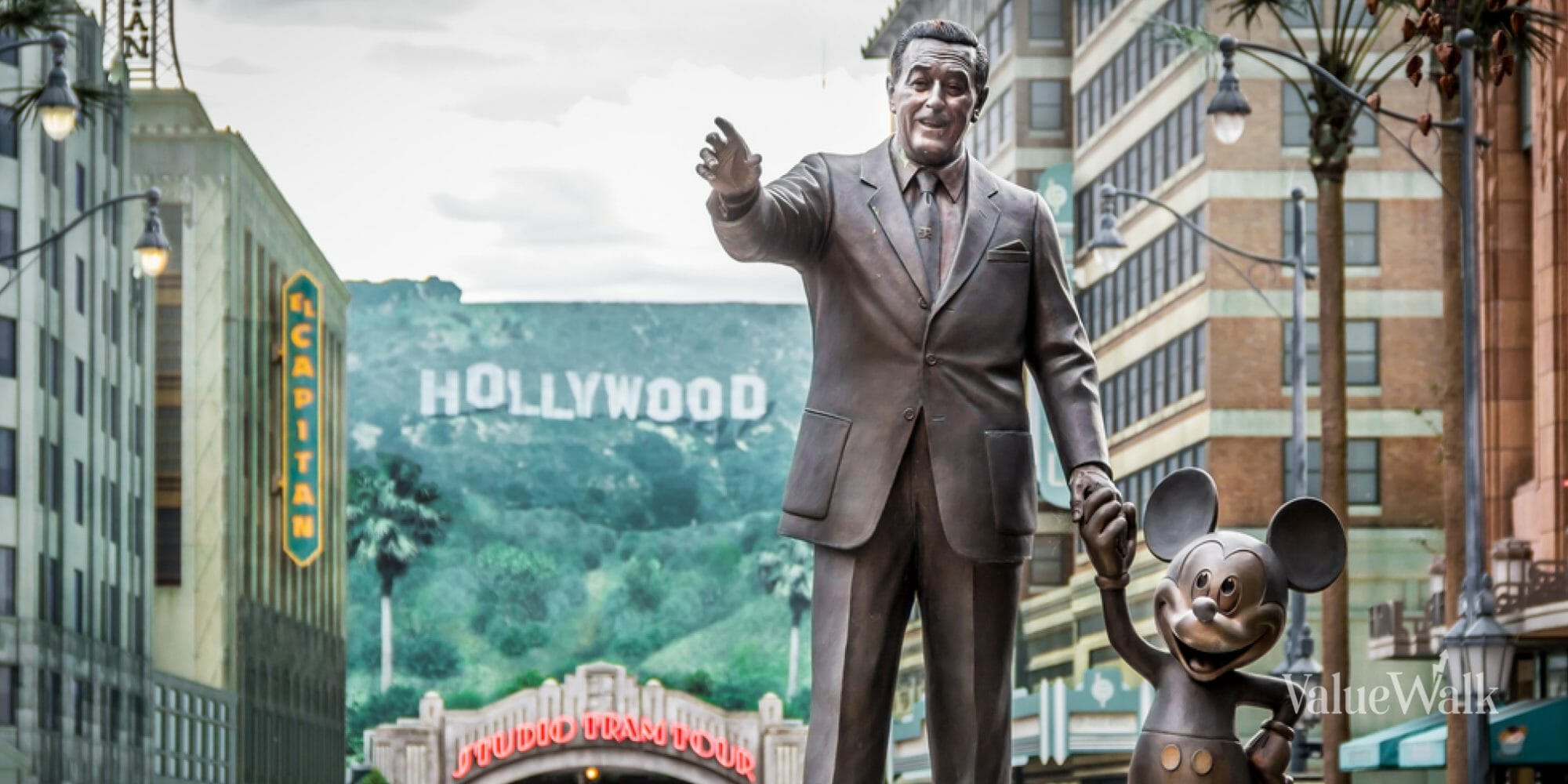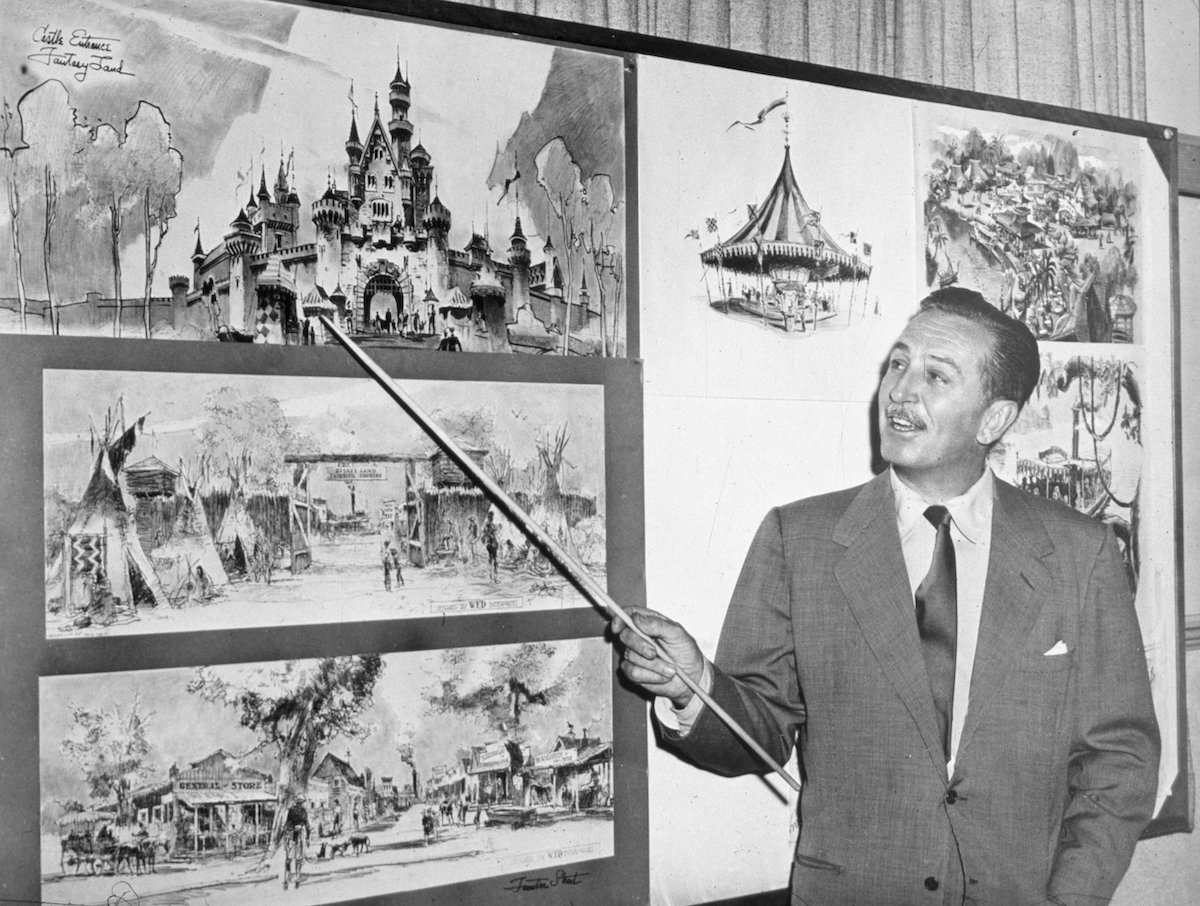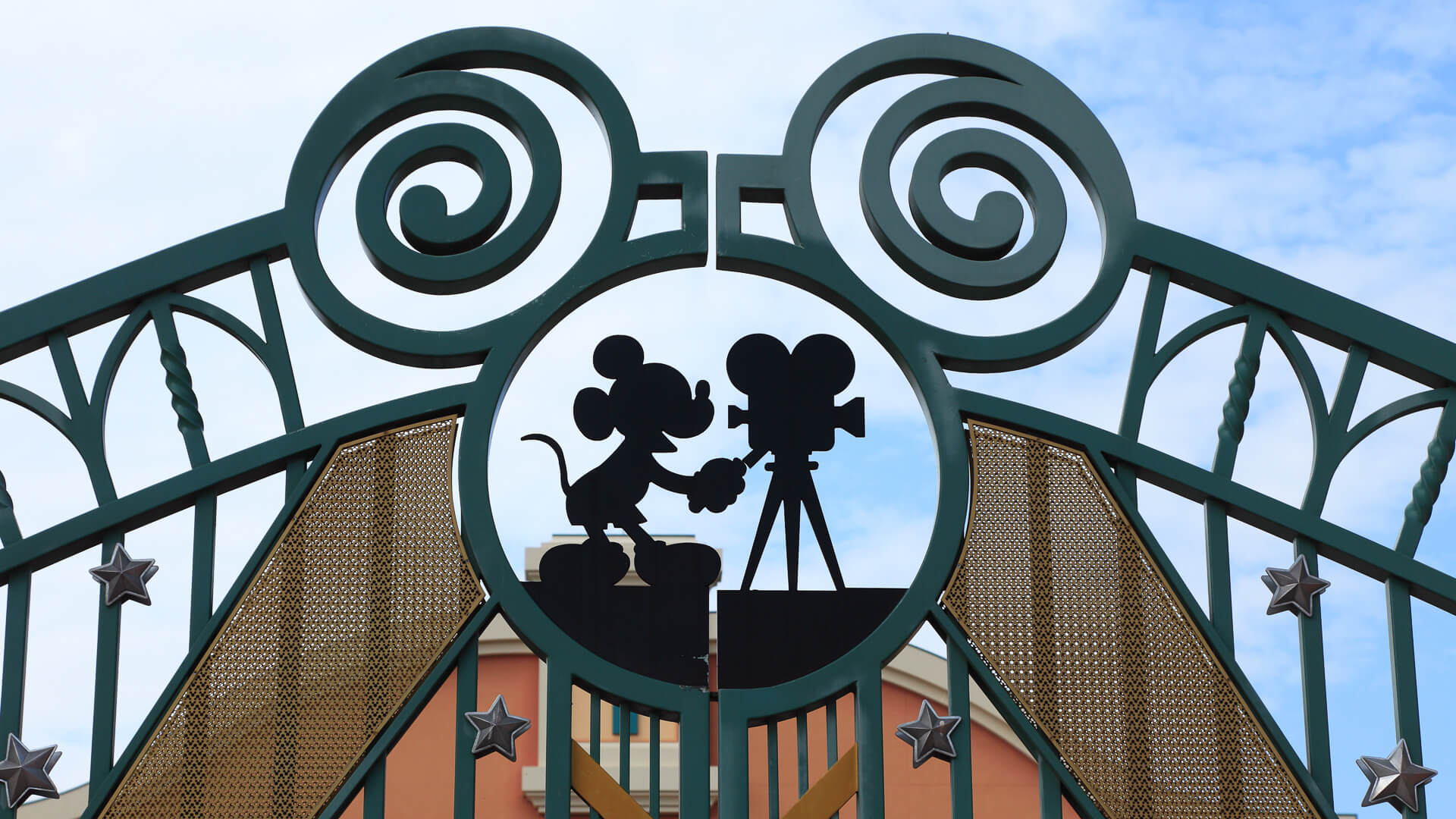How Much Was Walt Disney Worth? Unpacking His Creative And Financial Legacy
Many people wonder about the personal fortune of Walt Disney, a true visionary who gave us so many cherished stories and places. It's a question that often pops up, especially when we think about the vast entertainment company that bears his name today. Just how much wealth did he gather during his remarkable life? That, you know, is a really interesting thing to consider for someone who shaped so much of popular culture.
Figuring out the exact financial standing of a historical figure, especially one like Walt Disney, can be a bit more involved than you might first think. His impact stretched far beyond simple money amounts, reaching into the hearts of generations. Yet, the curiosity about his personal finances remains, and it's something people often search for, perhaps to get a better grasp on his life's accomplishments. So, we're going to look into what we know about his wealth.
This article aims to explore Walt Disney's financial journey, providing some clarity on the question: "how much was Walt Disney worth?" We'll look at his early days, his big successes, and what his assets looked like when he passed away. It's a way to understand the man behind the magic, and how his financial story unfolded, which is, you know, quite a tale in itself.
Table of Contents
- Who Was Walt Disney?
- Understanding 'Much' in Walt Disney's Wealth
- Walt Disney's Financial Journey
- Estimating Walt Disney's Net Worth at His Passing
- The Legacy Beyond Money
- Common Questions About Walt Disney's Wealth
Who Was Walt Disney?
Walter Elias Disney was a truly remarkable American film producer, director, screenwriter, voice actor, animator, entrepreneur, and theme park designer. He co-founded Walt Disney Productions with his brother Roy O. Disney. He was a pioneer in the animation business, introducing many new ideas and techniques to cartoons. His creations brought joy to millions, and his business grew into a huge global company, so, you know, he really made a big mark.
Walt Disney's early life had its share of challenges. He grew up in Missouri and Kansas, showing an early interest in drawing. His first attempts at business were not always smooth, but his passion for storytelling and animation kept him going. He had a unique ability to dream big and then work incredibly hard to make those dreams come true, which is, a pretty rare quality to find in someone.
He was a person who believed in the power of imagination and the importance of family entertainment. His drive led to the creation of iconic characters and places that are still beloved today. His story is one of perseverance and creativity, and it shows how a single person's vision can shape an entire industry, you know, for a very long time.
Personal Details and Bio Data
| Full Name | Walter Elias Disney |
| Born | December 5, 1901, Chicago, Illinois, U.S. |
| Died | December 15, 1966, Burbank, California, U.S. |
| Occupation | Animator, Producer, Director, Entrepreneur, Voice Actor |
| Spouse | Lillian Bounds (m. 1925) |
| Children | Diane Marie Disney, Sharon Mae Disney (adopted) |
| Known For | Co-founding The Walt Disney Company, Mickey Mouse, Disneyland |
Understanding 'Much' in Walt Disney's Wealth
When we ask "how much" Walt Disney was worth, we're really asking about a "great quantity" or "large amount" of his financial holdings. The word "much" itself means a significant quantity, extent, or degree. For instance, if someone has "much" wealth, they have a substantial amount of it, perhaps more than what's typical or ordinary. This can be tricky to pin down exactly for someone who lived in a different time, especially when their wealth was tied up in a growing business. So, it's not always a simple number.
Figuring out "how much" someone like Walt Disney had involves looking at different types of assets. It's not just cash in a bank account. It includes things like stock in his company, properties he owned, and any other investments. The meaning of "much" here extends to a "large degree" of influence and control over his creations and the company he built. So, when we talk about his worth, we're considering both the direct money and the value of his business interests, which were, you know, quite extensive.
The term "much" also implies a notable abundance. Walt Disney certainly had a significant impact, and his financial success reflected that. But placing a precise number on "how much" can be difficult because the value of assets changes, and historical records can be complex. We're looking for a "large quantity or amount" of his total financial picture, and that picture has many parts. It's not just a quick calculation, very much like a puzzle with many pieces.
Walt Disney's Financial Journey
Walt Disney's path to financial success was anything but straight. He faced numerous challenges and financial struggles before finding his footing. His story is a classic example of persistence paying off, even when things seemed quite bleak. It shows that, you know, success often comes after many tries.
Early Ventures and Setbacks
Before Mickey Mouse, Walt Disney experienced several business failures. His first animation company, Laugh-O-Gram Studio in Kansas City, went bankrupt in 1923. He then moved to California, hoping for a fresh start. These early experiences taught him valuable lessons about the business side of animation, even if they were financially painful at the time. It was, you know, a tough way to learn.
He even lost control of his popular character, Oswald the Lucky Rabbit, to a distributor. This event was a big blow, but it also pushed him to create something entirely new and own it completely. This setback, in a way, led directly to his greatest creation. So, sometimes, a bad turn can lead to something better, that is, if you keep going.
Mickey Mouse and the Turning Point
In 1928, Mickey Mouse arrived on the scene with "Steamboat Willie," the first cartoon with synchronized sound. This was a game-changer. Mickey quickly became a national sensation, and with him came new opportunities for merchandising. Walt and his brother Roy were smart about selling Mickey Mouse products, like toys and books, which brought in a lot of money beyond just the films. This was, you know, a really smart move.
The success of Mickey Mouse allowed Walt Disney to expand his studio. He started making more cartoons and experimenting with new animation techniques. This period marked a significant shift in his financial fortunes, moving him from struggling artist to a budding business leader. It showed that a single idea could, very much, change everything.
The Studio's Growth and Diversification
The 1930s and 1940s saw the Walt Disney Studio grow significantly. They released the first full-length animated feature film, "Snow White and the Seven Dwarfs," in 1937. This film was a huge financial risk, costing a lot of money to make, but it paid off immensely, earning a great deal of profit. This success helped fund future projects like "Pinocchio" and "Fantasia." This was, you know, a very brave step.
After World War II, the company began to diversify. They started making live-action films, television shows, and even nature documentaries. This expansion meant more revenue streams and a more stable financial base for the company. Walt was always looking for new ways to tell stories and reach audiences, which, you know, kept the company growing.
Disneyland: A Monumental Bet
Perhaps Walt Disney's biggest personal financial gamble was Disneyland. He had a vision for a new kind of amusement park, a place where families could have fun together. Banks were hesitant to lend money for such an unusual idea, so Walt put much of his personal savings and even borrowed against his life insurance policies to help fund the park. It was, you know, a huge risk.
Disneyland opened in 1955 and was an immediate success. It quickly became a major profit center for the company and a powerful engine for brand growth. The park's success proved Walt's belief in immersive entertainment and significantly added to the value of his company. This venture really showed his willingness to, very much, put everything on the line.
EPCOT and Beyond
Even in his later years, Walt Disney was full of ideas for the future. He envisioned EPCOT (Experimental Prototype Community of Tomorrow) as a real, working city of the future, not just another theme park. He bought vast amounts of land in Florida for this project, showing his long-term vision and commitment to innovation. This project, you know, was something truly ambitious.
Though he passed away before EPCOT could be fully realized, his plans laid the groundwork for Walt Disney World Resort. His constant drive to innovate and create new experiences kept the company at the forefront of entertainment. His ideas continued to shape the company's direction, even after he was gone, which, is that, a pretty lasting impact.
Estimating Walt Disney's Net Worth at His Passing
When Walt Disney passed away on December 15, 1966, his personal wealth was primarily tied up in shares of The Walt Disney Company. It's not as simple as looking at a bank account balance. His fortune was largely intertwined with the success and value of the company he built. So, figuring out "how much" he had involves looking at the value of those shares at the time.
Estimates vary, but it's generally accepted that Walt Disney's net worth at the time of his death was around $100 million to $150 million. To put this in perspective, $100 million in 1966 would be equivalent to a far larger amount today, perhaps around $900 million to over $1 billion, when adjusted for inflation. This amount was, you know, a truly significant sum for the era.
His wealth was not just in cash. A large portion was in his ownership stake in Walt Disney Productions. He also held various personal assets, including real estate and personal investments. The value of "much" in his estate reflects the immense success of his ventures, particularly Disneyland and the growing media empire. It shows that he had a large quantity of financial holdings, very much a testament to his hard work.
It's important to remember that the company itself, The Walt Disney Company, was a separate entity, even though he founded it. Its market value was much greater than his personal net worth. His personal wealth represented his share of that larger entity. This distinction is key when trying to understand "how much" he personally possessed versus the total value of his creation. This is, you know, a common point of confusion.
The actual distribution of his assets after his passing also played a role in how his wealth was managed. Much of his estate was placed into trusts for his family and for philanthropic purposes. This meant that while he had accumulated a great amount of wealth, it was structured to benefit others and continue his legacy, rather than just being a single cash pile. So, it was, in some respects, wealth with a purpose.
The Legacy Beyond Money
While the question of "how much was Walt Disney worth" is interesting, his true legacy extends far beyond any dollar figure. He left behind a creative empire that continues to entertain and inspire people all over the globe. The characters, stories, and theme parks he brought to life have become a part of our shared cultural experience. This influence is, you know, immeasurable.
His work set new standards for animation and storytelling. He showed what was possible when imagination and technology came together. The impact of his vision is still felt today in every Disney film, every theme park visit, and every piece of merchandise. His contribution to popular culture is, in a way, a far larger amount than any financial sum could represent.
The company he co-founded, The Walt Disney Company, has grown into one of the largest and most influential media conglomerates in the world. Its current market value is many, many times what Walt's personal fortune was. This ongoing success is a direct result of the foundation he built and the principles he established. It is, very much, a living testament to his vision.
Walt Disney's legacy is about the joy he created, the dreams he inspired, and the innovative spirit he fostered. He taught us that "if you can dream it, you can do it." That kind of lasting impact, that "great in extent or degree" influence on the world, is something that money alone cannot buy or measure. It's a kind of wealth that keeps giving, you know, year after year.
To learn more about the history of animation on our site, you can visit this page to explore the evolution of theme parks. These areas show just how much Walt Disney influenced the entertainment world, leaving behind a truly significant mark.
Common Questions About Walt Disney's Wealth
Did Walt Disney die a millionaire?
Yes, Walt Disney was indeed a millionaire at the time of his passing in 1966. His estimated net worth was between $100 million and $150 million, primarily in company stock and other assets. This was a very large sum for the period, making him one of the wealthier individuals of his time. So, he had, you know, a great deal of money.
Who inherited Walt Disney's money?
Walt Disney's estate was primarily inherited by his wife, Lillian, and his two daughters, Diane and Sharon. Much of his wealth was placed into trusts, including charitable foundations. This structure helped manage the assets and support various causes, continuing his philanthropic interests. It was, basically, set up to provide for his family and give back.
How much money does the Disney family have today?
The direct descendants of Walt Disney, while still very comfortable, do not control The Walt Disney Company or its vast wealth today. The company is publicly traded, owned by many shareholders. The family members hold their own personal fortunes, which are separate from the company's overall value. Their wealth comes from their inheritance and their own ventures, not from directly owning the entire Disney corporation, which is, you know, a big difference.

Exploring Walt Disney's Net Worth In 1966: A Legacy Beyond Wealth

What Was Walt Disney's Net Worth at the Time of His Death?

How Much Is Disney Worth? See Their Net Worth Today. | GOBankingRates